We use cookies to improve your online experiences. To learn more and choose your cookies options, please refer to our cookie policy.
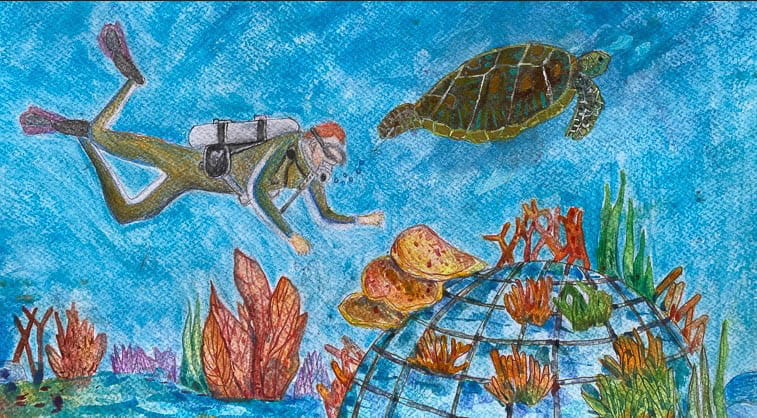
Over the last few months our Year 9 students have been deep diving into a big project that will have a positive impact on marine life around Thailand. Working with ATMEC (Aow Thai Marine Ecology Center), our students have embarked on a comprehensive learning programme that will see them design and build an artificial reef which will be placed in the Gulf of Thailand near Rayong.
“Taking a project like this from concept to execution is an ambitious task and it does more than test the kids’ building skills. As well as blending skills in a range of academic subjects, they also have to be able to listen, negotiate, and collaborate with their team, as well as problem-solve, think critically, and manage time well to be able to complete their project. It’s a real challenge.”
- Ms Holly, Head of Design & Technology
Stage 1: Research & Briefing
The project began with a period of research-driven study as the Year 9’s learned about the task ahead. Dr Rahul Mehrotra, an accomplished marine biologist and certified Conservation Diver instructor, visited the school from ATMEC to present an overview of the importance of reefs to students. During his talk Dr Rahul advised the students of the design requirements of a nursery reef. This underlined the complexity of the task and presented each team of students with their next challenge – modelling their initial ideas.
The brief:
- design and create a coral nursery structure from rebar;
- use 8mm diameter or greater rebar; structure must weigh more than 5kg, otherwise waves will move it;
- structure must be greater than 50 cm and no bigger than 1 meters in any direction;
- individual nurseries should be no bigger than 1m x 1m x 1m due to transport difficulties and to ease placement by divers.
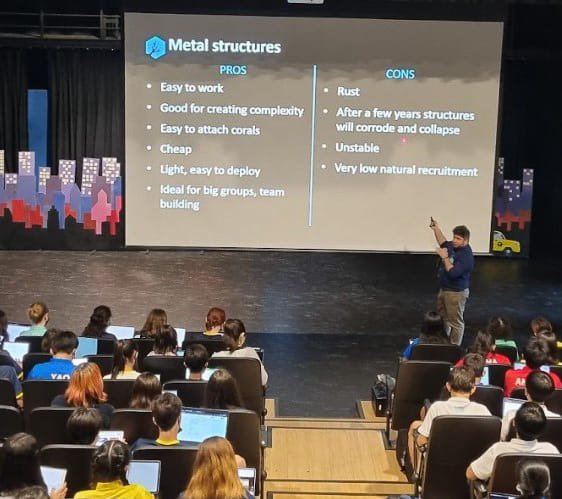
Dr Rahul takes Year 9 students through the design requirements of an artificial reef
Stage 2: Design ideas
After being briefed, each class formed 3-4 student groups whose next task was to draft their design ideas. As you can imagine, maths and design skills played an important role during this stage, and classes in the day-to-day curriculum were arranged to include key skills needed to complete their design. In Maths, students had a chance to put their geometry skills to practical use, as knowing how to calculate the area and circumference of circles, as well as the surface area of cylinder rebar rods, was critical to being able to meet the requirements of the brief.
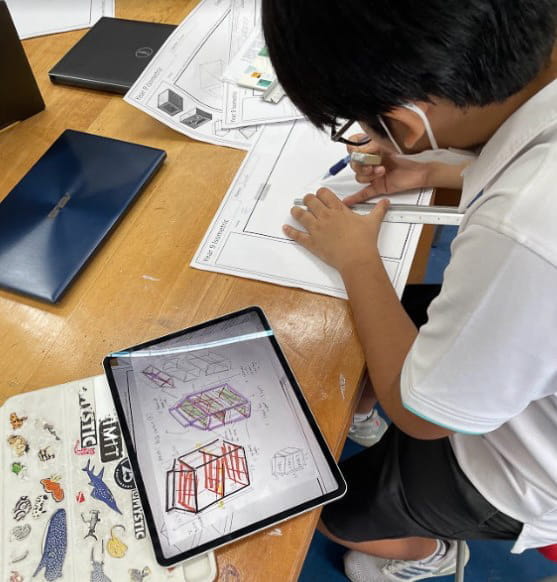
A Year 9 student calculating artificial reef dimensions
Once completed, each class sent up to 3 draft designs to the ATMEC team for review and feedback. Based on the feedback, each team made adjustments and improvements to their structure to enjoy it would do its job once placed in the sea. Each artificial reef is expected to last several years so refinement is a crucial stage of its success.
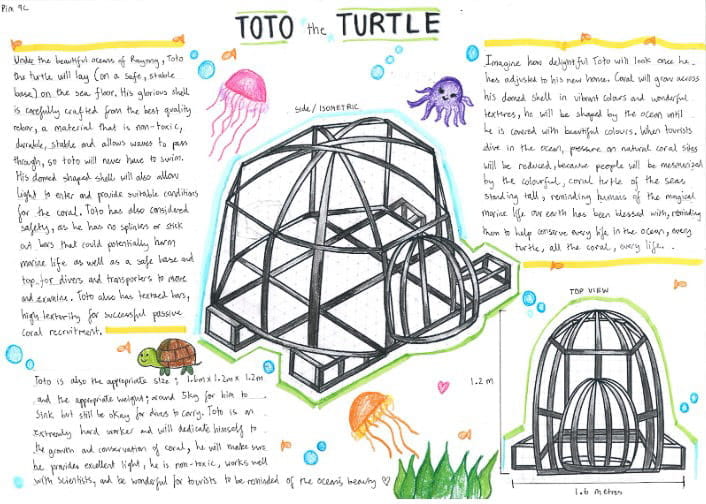
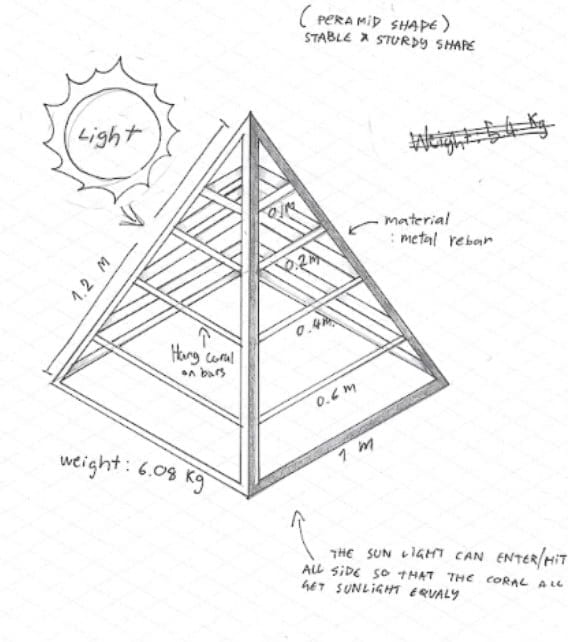
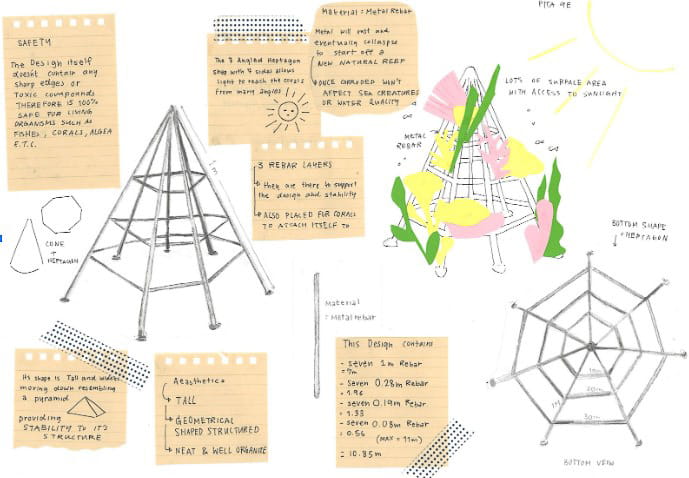
Plans and drawings by students
Once they had worked out what they needed to build, they built. Bending and manipulating rebar, cutting the rebar with hacksaws, joining and tying the rebar with steel ties to prepare their structure for welding. Over 25 structures had been built, during this process the Year 9 students have learned a huge amount about taking a brief and designing a structure from concept to manufacture. This project has utilised their technology skills and challenged their design skills when working with new materials and the constraints that go along with them - all the factors of a real world brief.
Stage 3: Building the artificial reef
Before building the final structure with metal, each group began modelling their design using more easily workable materials. That could be paper, straws, cardboard, or whatever could give a life-like representation of what the students hoped to build. Like any complex structure, this needed detailed drawings so that dimensions, welding spots, and any other design specifications could be followed.
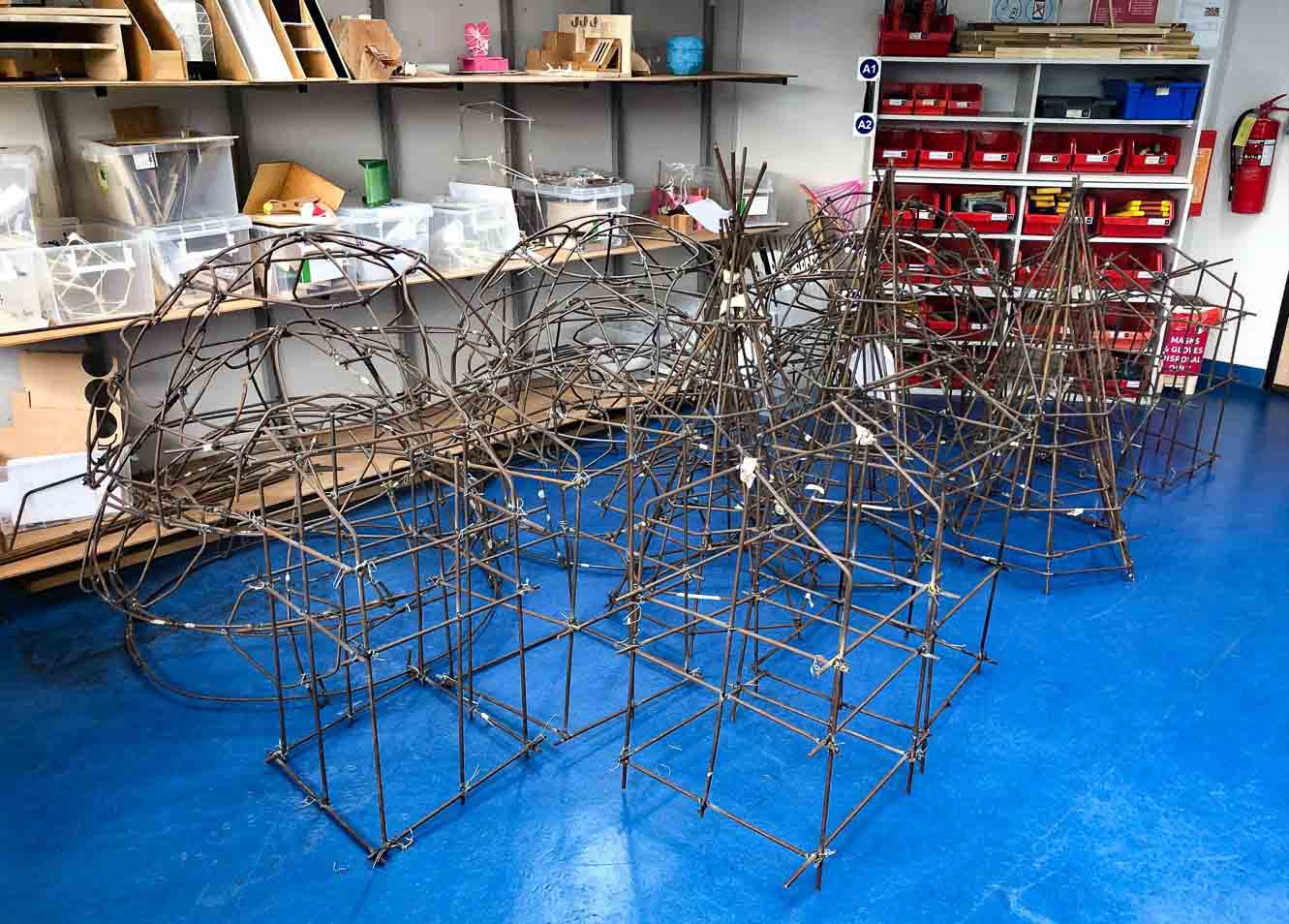
Finished artificial reefs waiting to be taken to the sea
The structures were all completed in early November and then together with ATMEC, the first batch of the artificial reef structures were transported and deployed to their final spot with many of the students and staff leading the project. Now the artificial reefs will be monitored and data will be collected in the next coming weeks and months. Our students and teachers will be part of the next dive to check the data with ATMEC to see how they have performed. Exciting times ahead!
*** This is part 2 in a 3-part series that will also be highlighted at our High School STEAM Expo on Friday 2nd December 2022. Part 1, please click here.